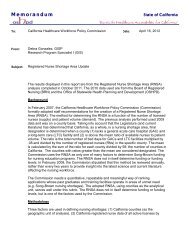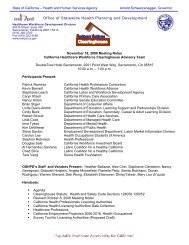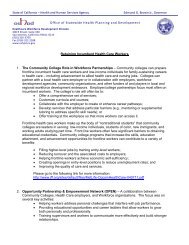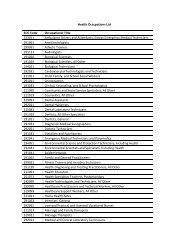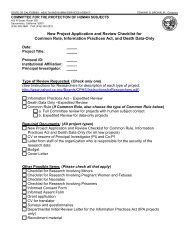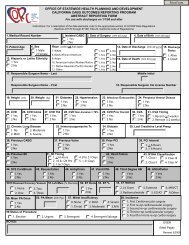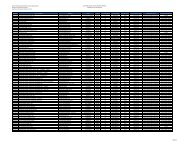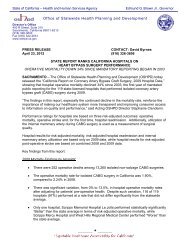Best Practices for Project Management, Design, and Construction of ...
Best Practices for Project Management, Design, and Construction of ...
Best Practices for Project Management, Design, and Construction of ...
You also want an ePaper? Increase the reach of your titles
YUMPU automatically turns print PDFs into web optimized ePapers that Google loves.
• Identify any equipment that requires seismic certification <strong>and</strong>/or essential power.<br />
• Identify equipment mounting detail locations.<br />
• Identify water temperatures <strong>and</strong> high limit alarm locations.<br />
• Provide in<strong>for</strong>mation indicating domestic hot water distribution temperatures per CPC<br />
Chapter 6.<br />
• Identify medical gas zone valve <strong>and</strong> alarm locations.<br />
• Identify areas where special precaution piping is required per CAN 5-311.9.<br />
• Identify ro<strong>of</strong> drainage calculations.<br />
• Identify Domestic Water sizing criteria.<br />
• Indicate wall ratings <strong>and</strong> locations <strong>of</strong> fire/smoke dampers.<br />
• Provide validation that existing equipment <strong>and</strong> distribution services have the necessary<br />
capacity during remodel or expansion projects.<br />
In<strong>for</strong>mation Plans<br />
Various types <strong>of</strong> drawings are necessary to convey essential in<strong>for</strong>mation such as Schedules,<br />
Piping Diagrams, Mounting Details <strong>and</strong> Control Diagrams.<br />
The title page should clearly define the project location <strong>and</strong> vicinity by graphical means. The<br />
applicable building codes should be stated. A drawing index is recommended to clearly identify all<br />
the unique systems that may be involved.<br />
Site Plans<br />
If the project involves outside (exterior) plumbing work outside the normal 5’-0” from the building,<br />
then it should be clearly shown in the site plan documentation.<br />
Floor Plans<br />
It is recommended to follow the architectural floor plan nomenclature <strong>for</strong> sheet order <strong>and</strong> sheet<br />
numbering in order to simplify the logical sequence <strong>of</strong> cross-coordination with all trades<br />
(disciplines). Traditionally, the floor plans provide the documentation <strong>of</strong> the architectural features<br />
as a shaded background <strong>and</strong> the plumbing devices are prominently shown on top <strong>of</strong> these<br />
locations. However, it is important to clearly identify room names <strong>and</strong> wall ratings <strong>for</strong> OSHPD<br />
review.<br />
Enlarged Drawings<br />
The drawings that contain a significant amount <strong>of</strong> in<strong>for</strong>mation require much more space to clearly<br />
communicate the scope <strong>of</strong> work. These drawings tend to be the ¼” scale or larger, in order to<br />
show exact placements <strong>and</strong> or intent. In addition, these drawings may comprise several<br />
elevations to demonstrate the intent.<br />
Organization <strong>and</strong> Approach<br />
The Plumbing drawings represent work that is closely coordinated with many other disciplines<br />
such as architectural, structural, electrical, <strong>and</strong> mechanical. The need to have very well<br />
coordinated drawings is equally important with all disciplines. Based on many experiences, the<br />
last minute little changes from one discipline cause large issues <strong>for</strong> another discipline.<br />
(OSHPD <strong>Best</strong> <strong>Practices</strong>) Page 51 DRAFT FINAL, Sept. 2011



